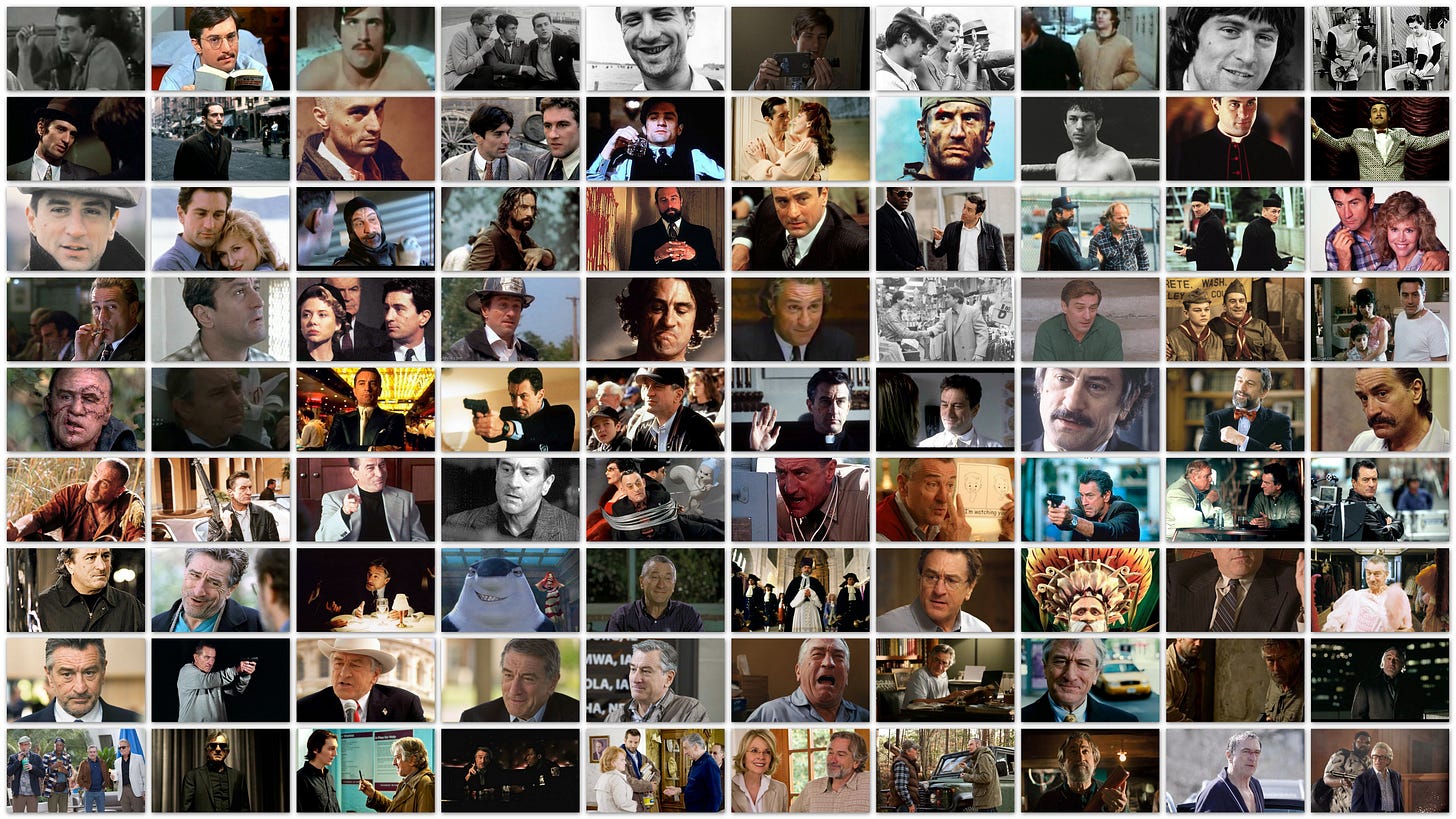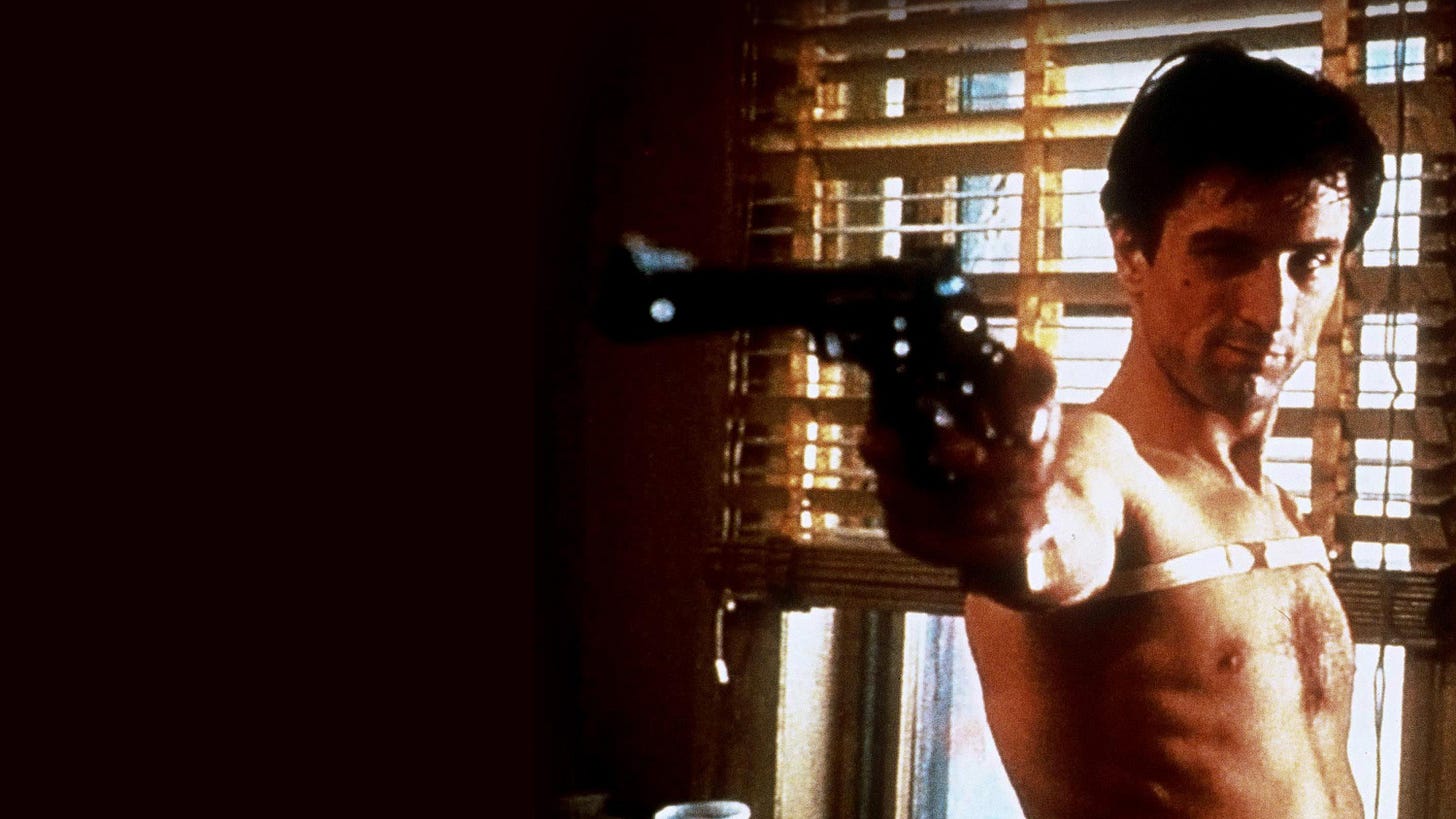Stealing allowed - Robert De Niro style
Robert De Niro was once asked about his acting and where he got all his inspirations from. His reply was, as I remember it: "I steal. All the time. I see a bit of great acting, I take it."
Robert De Niro explained that this wasn’t about copying or imitating. The moment he saw something brilliant, he began to work it until it became a part of him. By doing so, it became a new thing, an original thing, a De Niro thing.
That bit of “De Niro” thinking is hugely helpful - because it enables. Every time the little man in your writer’s head looks at what you’ve just written and annoyingly proclaims “It’s been done! That ain’t original!” - you can tell him to stuff it. You just have to do something with it so that it becomes your original. Allowing yourself to take from the creations of others and morphing them into something new is incredibly empowering. It opens up whole worlds for you to pick and choose from. The world of film is your supermarket!
Let’s stay with Robert De Niro for a moment. The man may say that he steals, but he’s a pro - he won’t copy, he is a master of his trade. Become a pro yourself, discover your own voice - because that is truly the only thing that differentiates you from everyone else. If you’re good at your job, you will, like De Niro, take inspiration from the world around you, but you’ll make that thing your own. That’s not as easy as it sounds, of course. Here are the three things that can happen:
It morphs into something new. You’ve taken the essence of another film’s moment, twist, etc. and, because you’ve brought it into your world, your characters, with your style/voice, it’s unrecognizable from the original. That is what you want to shoot for.
It becomes an homage. You’ve seen this a million times. A famous moment is incorporated into another film in ways that keep it recognizable. Some of these work - on a whole, however, try to stay away from those. An homage is an intellectual moment - the audience “gets it” and that moment takes them to a different movie - hence, out of your story, even if only for a moment.
It remains a copy. Lazy writers will try to sell you those as homages. But seriously now, if readers turn up their nose because it reeks of imitation, it probably is.
So, steal, borrow - call it what you will - you’re allowed. What you’re not allowed to do is copying and imitating. Instead let yourself be inspired by every bit of movie magic out there - some of them may make for THE perfect moment in your own story ... and the beauty of it is that no one will ever care or even know where the initial bit of inspiration came from. Because you will have made it your own, with your own spin, and with your own hopefully inimitable voice.
Finally, since we’re on the subject, here’s a curious little De Niro anecdote:
“You talkin to me?”
De Niro’s “You talkin’ to me?” from Scorsese’s Taxi Driver has got to be one of the most quoted movie lines of all times. I’ve taken a quick dive into the world wild webs and read something that is undoubtedly true because, heck, . In any case, it does make for a nice little related anecdote.
Clarence Clemons, the Sax man from Bruce Springsteen’s E Street Band, spilled the beans in a New York Daily News interview. De Niro revealed where the inspiration for that line came from, while Clemons was coaching him for the movie New York, New York. Here in Clemons’ words, “De Niro had been to one of our concerts and the audience was yelling out ‘Bruce!’ In those days, Bruce would stop onstage and say, ‘You talkin' to me?’ De Niro was kind of channeling him in the film.”
So, next time you see Taxi Driver and De Niro utters those classic lines, you’ll know where they came from - but you’ll also see that it doesn’t take anything away from Bruce Springsteen or Robert De Niro. De Niro made that line, that moment, with his exquisite craft, entirely his own.









The homage can work very well in satires and I think that Everything, Everywhere All At Once did a great job of paying homage to some great moments in sci-fi film and at the same time making it an own thing.
But you’re absolutely right with your advice to avoid homage. One of the most annoying reads of my life was the novel Ready Player One on which the film with the same name is based. I have to say that Spielberg changed many parts of the story to make it work as brilliantly as it did for screen. But the novel itself was so obnoxious with its homage to ‘80s pop culture trivia that I wanted to just throw it at the wall in frustration. (It didn't help that I was reading it on Kindle.) Also, the three game challenges through which the main character goes are actually all the same, an Atari game. I applaud Spielberg for seeing potential in the story and turning the shapeless bohemian crystal into a true diamond. Now that’s some storytelling talent. And his homage to’80s pop culture works.